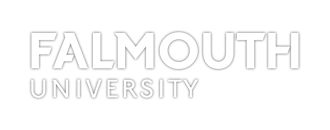Insensate Archive
Chapman, Neil  ORCID: https://orcid.org/0000-0001-8253-0256
(2021)
Insensate Archive.
Working Paper.
UNSPECIFIED.
(Unpublished)
ORCID: https://orcid.org/0000-0001-8253-0256
(2021)
Insensate Archive.
Working Paper.
UNSPECIFIED.
(Unpublished)
|
Text (Lecture script)
Insensate_Archive.pdf - Draft Version Restricted to Repository staff only until 1 January 2031. Available under License Creative Commons Attribution No Derivatives. Download (370kB) | Request a copy |
Abstract / Summary
This lecture finds its starting point in an observation regarding collections of things that appear to have gathered as if of their own volition. In domestic spaces, unconscious movements and levels of indecision give rise to these various accumulations, which can remain unseen even while in view. The phenomenon lends itself to study under the heading of ‘the everyday’, revealing complexities of psychic life in inhabited space. But it is an event of other kinds of space and space-use too, not least workspace where unconsciously accumulated archives can have a strategic function, even while the apparent ‘act’ of collecting escapes the practitioner’s control. Here, the name ‘insensate archiving’ is proposed to help explore how the material practice in question provides a perspective on work. Specifically, the insensate archive offers clues to how criticality emerges in artists’ work where it may not have been expected, and where more conventional ways of thinking about criticality would not be well-suited to grasp the stakes in what’s taking place. Support for the idea of insensate archiving is found in the work of curator Carolyn Christov-Bakargiev, who testifies to a closely related event in her own practice. Just as her ‘compost archive’ names an aspiration for exhibition organisation, so the insensate archive makes possible a political engagement with current discourse on material practice and the institutions in which such practices take place. The idea of criticality in material practice is expanded through a reading of remarks by historian Georges Didi-Huberman, for whom a viewer’s encounter with the image can be a form of criticality in its own right, even before the discourses usually thought necessary to make criticality evident. In his account, the viewer’s pause during which such work takes place amounts to an unexpected agency given over to the components of the image, with revelations to follow. The insensate archive, it is argued, works in a comparable way with components that have assume their own power to come and go in material terms, thus confounding customary ideas of the archive and revealing a form of criticality peculiar to material practice.
| Item Type: | Report or Working Paper (Working Paper) |
|---|---|
| Subjects: | Arts > Drawing Arts > Historical Arts > Fine Art Philosophy & Psychology Arts > Photography Public Exhibition Research Arts > Sculpture |
| Courses by Department: | The Falmouth School of Art > Fine Art |
| Depositing User: | Neil Chapman |
| Date Deposited: | 12 May 2021 14:58 |
| Last Modified: | 11 Nov 2022 16:21 |
| URI: | https://repository.falmouth.ac.uk/id/eprint/4286 |
Actions
 |
View Item (login required) |

 Tools
Tools Tools
Tools